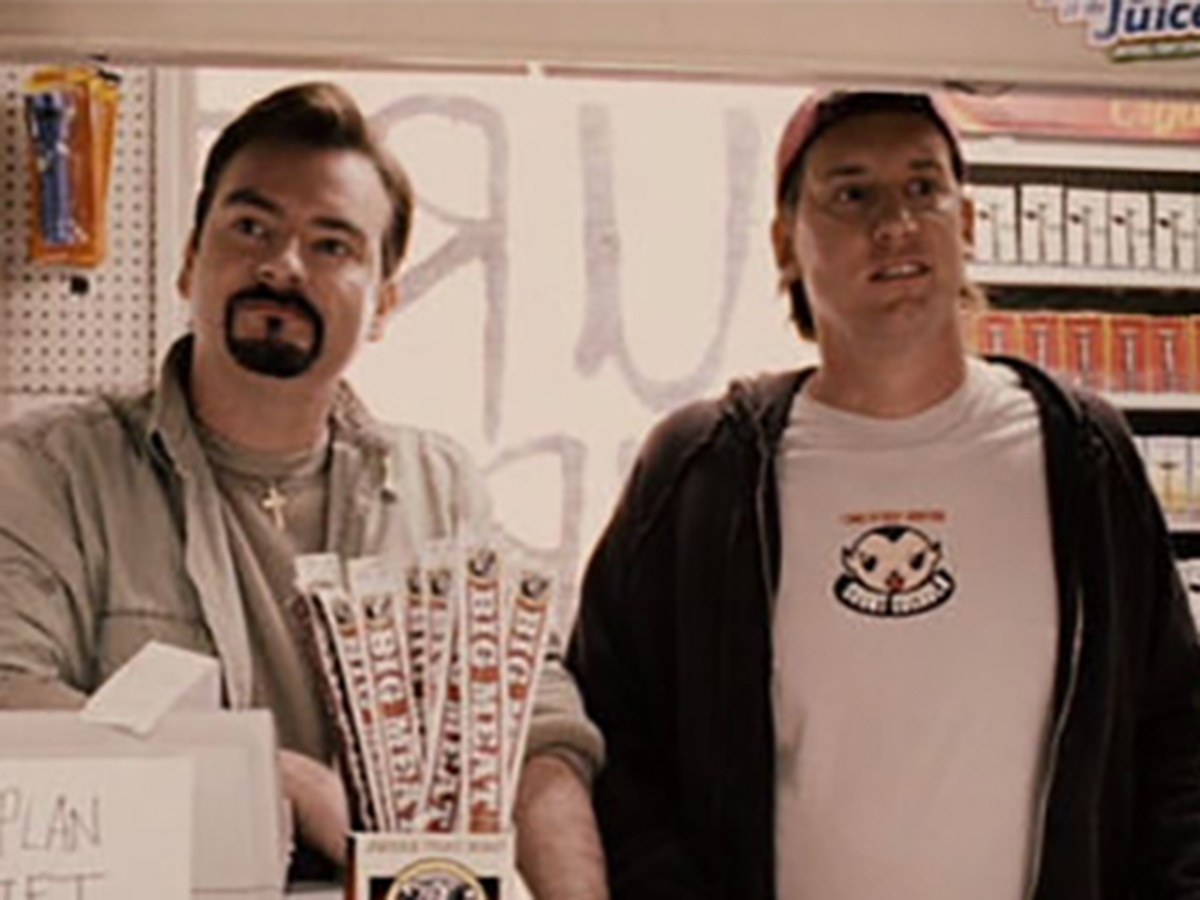
“Clerks III” has the opportunity to be a great film if Kevin Smith as a director can rediscover his touch. There are a few indie character-driven films like “Clerks I,” “Clerks II,” “Dogma” and “Chasing Amy” that show off Smith’s greatest talents as a writer-director. Smith’s minimalist aesthetic is what made films like “Mallrats” cult classics, and thus, bigger is not always better. Smith’s films at their core are character-driven stories. Films like “Chasing Amy” are a great example of Smith’s hidden ability to write great dialogue and great character dynamics. The secret of every good film is heart, and Smith knows how to make us fall in love with his protagonists.
Bigger is not always better. Kevin Smith was great when he had a small budget. Nowadays, Smith’s films, like “Yoga Hosers” and “Moose Jaws”, are plot-driven monster flicks with big budgets. With recent films like “Yoga Hosers” having bigger budgets than his older films like “Chasing Amy,” Smith’s newer films tend to feel as if he’s just throwing money at projects with less worry about whether or not the film itself provides anything of substance. Money cannot fix a bad script. A film stands on the merits of its creative quality, not it’s budgetary quantity. “Yoga Hosers” had a $5 million budget, as opposed to “Chasing Amy,” which was filmed on a budget of a quarter of a million dollars. The only major difference is that “Chasing Amy” made 48 times what it cost to make, while nobody went to go see “Yoga Hosers.”
One is a macrocosm tale and one is a microcosm tale. Both films are by the same writer-director, yet one is plot-driven while the other is character-driven. Films don’t need to be bigger, better, budgetary, expensive and flashy to be quality. They just need to be quality, and that problem lies in the dialogue and the character dynamics. “Yoga Hosers” has no heart and tries to squeak by with little to no character development, relying almost entirely on the plot to drive the story forward, whereas “Chasing Amy” is driven by the relationship between Ben Affleck and Joey Lauren Adams and squeaks by with little to no plot whatsoever.
You don’t always need a big “the universe is going to explode” plot to bring people in. “Clerks II” works because it returned us to a more minimalistic form of storytelling that Smith is good at. It includes just three characters who fill the traditional comedy film trio: our moral protagonist, our love interest and our foul mouthed side kick. This trope has been used in plenty of films, from “Fight Club” to “Superbad.” It’s the comedy format that worked for all of Kevin Smith’s early works before he went off the rails with big-concept nightmares like “Tusk,” “Red State,” “Jersey Girl,” “Zack & Mindi,” “Yoga Hosers” and “Jay & Silent Bob I and II.”
Comedy is a great tool for character building. “Chasing Amy” is a film about two people falling in love. But the film works because Ben Affleck, Jason Lee and Joey Lauren Adams all connect to each other by making each other laugh. Not only does this actually work on a character building level, it’s genuinely entertaining because we’re laughing too. Laughter bonds our characters to one another and to us. In this way, characters don’t always have to be likable, just interesting. I like Joey Lauren Adams as Amy because she’s interesting and makes me laugh, but she’s breaking Affleck’s heart all the way, so I want to hate her. Thus, comedy can be the ultimate bridge builder between the fictional things happening on the screen and the patient audience member folded out on the couch 10 feet away.
The secret of every good film is heart. This means you can’t be so slapstick that we don’t take your universe or your plot seriously, and you can’t be so serious that you bore us to tears. Most of Kevin Smith’s big concept plot-driven films become so over-enveloped in their own macrocosm, they forget to include Smith’s witty dialogue, clever quibs, and three-dimensional interesting characters.
Kevin Smith is a great filmmaker. His sense of dialogue, heart, comedy and character building is beyond what most directors are capable of. But since “Clerks II” in 2006, Smith has increased his budgets and tried to tell much more macrocosm plot driven stories. Hopefully, “Clerks III” can be a return to form for Smith that utilizes his amazing dialogue, writing skills and his innate talent for microcosmic, minimalistic and character-driven storytelling.








